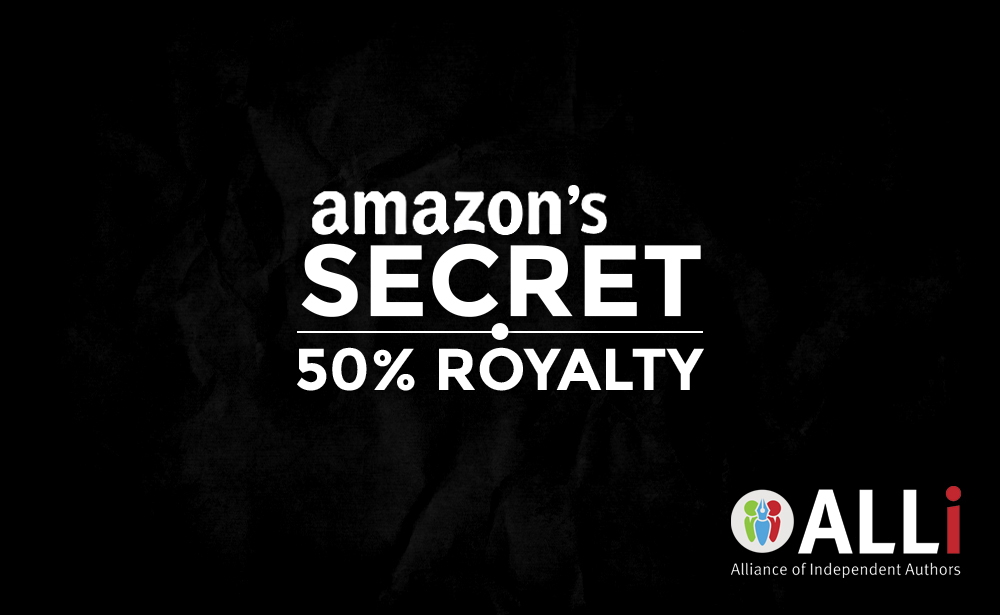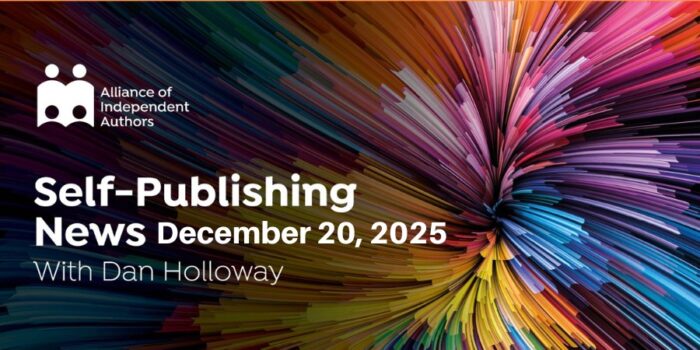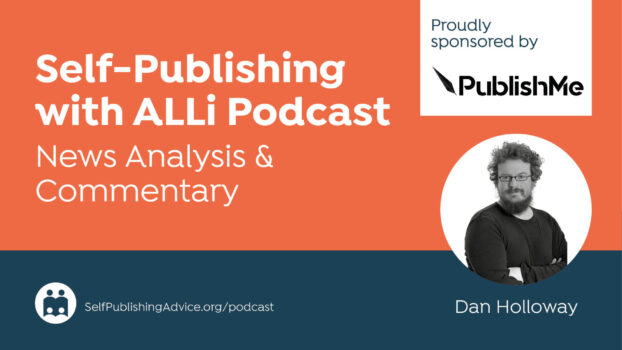On Monday, an error on KDP's site gave us a brief glimpse into the future. Nestled between the existing 35% and 70% royalty plans was a new option, a 50% royalty rate. The errant option could not be selected and had no documentation or delivery fees listed.
It was quietly removed the following day. During the short time it was visible, the 50% option was only available on titles priced between $2.99 and $9.99.
Clearly this was an error on Amazon's part (and they have stated as much), but the existence of this unutilized option raises questions about their plans for KDP authors.
Let me stress that at this point, we have no concrete information beyond the brief appearance of the 50% option. We can only speculate on possible explanations, a few of which appear below.
Hypothesis #1. Amazon plans to reward exclusive content (and penalize those who go wide).
This is the rumor that's causing the greatest consternation among indie authors. By restricting the 70% royalty tier to exclusive content, Amazon could make an aggressive bid to push authors into exclusivity, increasing the number of titles in Kindle Unlimited and tightening Amazon's grip on the market. Authors who go wide could see their Amazon royalties cut by 20%.
Hypothesis #2. Amazon will offer a lower royalty rate, but would allow authors to opt in to Kindle Unlimited on a non-exclusive basis.
What if you could trade a bit of your Amazon royalties for access to KDP's Global Fund, while still participating in the larger global market for ebooks?
A 50% royalty option might allow authors to participate in KU without sacrificing their independence and wider reach. KU could see an influx of fresh, popular titles, including blockbusters from publishers that have eschewed KU's exclusivity in the past.
This is admittedly an unlikely hypothesis given Amazon's desire to control as much of the global readership as possible. Nonetheless, one of the principal objections to KU is the restriction that titles be exclusive to Amazon. A compromise of lower royalties in exchange for waiving exclusivity could bring fresh life to KU, and new opportunities to authors.
Hypothesis #3. Amazon will offer a compromise for books with large file sizes and higher pricing.
One reason for the 35%/70% royalty split was to provide publishers with large file size titles an affordable alternative to Amazon's digital delivery fees. An intermediate tier could offer more flexibility in balancing royalties and delivery fees.
Consider an image-heavy title that weighs in at 12Mb, priced at $5.99. Amazon's digital delivery fees for a book of this size would total $1.80. A hypothetical 50% royalty plan that waived delivery fees for books over a certain price threshold would pay approximately $2.99 per sale. That would be an advantage over both the 70% royalty plan (which would pay $2.93 for this title) and the 35% royalty plan (which would pay $2.09).
Hypothesis #4. Amazon plans to encourage a specific price point for ebooks by creating an intermediate tier.
Another reason for the 35%/70% royalty tier structure is to encourage publishers to stay within Amazon's preferred price range, $2.99 to $9.99 (or £1.99 to £9.99 in the UK). By creating a new, preferred class at, for example 70% at $5.99 and above, Amazon can incentivize higher-priced ebooks and increase their bottom line. If this interpretation is correct, it could counter the perceived devaluation of ebooks by a glut of free and $0.99 titles.
Hypothesis #5. Amazon wants to tempt publishers away from the $0.99 price point and raise the floor of ebook pricing.
In line with Hypothesis #4, Amazon could also encourage a price shift in the lowest price ranges by providing authors of $0.99 titles a strong incentive to move up to $1.99 for their discounted titles. Titles priced below $2.99 comprise a huge chunk of Amazon's digital sales, and raising the floor of ebook pricing would have a corresponding impact on Amazon's revenue in that sector.
What Does It Mean?
At the moment, this is nothing more than conjecture. Amazon may implement one of the changes guessed at above, next week or years from now. They may surprise us — for better or worse — with a change none of us have foreseen. Or they may do nothing at all.
Whatever the future holds, this fleeting glimpse behind the curtain is an opportunity to reflect on three truths:
1. Amazon is driven by profits and market dominance, not benevolence towards authors, and the goals of the two are frequently in opposition.
2. Change is inevitable in the publishing industry, and when it comes, indie authors must be ready to adapt to it.
3. When you shackle yourself to a corporate behemoth, you go where it goes. If it decides to roll over to scratch its back, those who are bound too tightly to it may find themselves crushed underneath.
OVER TO YOU
What's your take on the mysterious 50% option? Will this be good or bad for authors? Let us know in the comments below!
Will Amazon's 50% royalty rate bring cheers or tears to authors? - by @johndoppler Share on XRELATED ARTICLES





Keep up to date with ALL the Atletico Madrid?news, gossip and transfers on our club pageThe?move, as.
Real Madrid star Isco has angrily?rubbished rumours of a move to Barcelona after playing a bit-part role at the Bernabeu this season.
After the debacle with the paperback royalties, i don’t think opting for anything in Amazon is a good idea at present. They’re telling me that £0.24 is is 60% of £3.04 and I can’t get them to correct it.
The issue is that they are multiplying the list price by 60% BEFORE removing the print cost:
£6.99 (list) * 60% = £4.19
£4.19 – £3.95 (print) = £0.24
This is around 7% royalty when they are promising 60%. The calculation should be:
£6.99 – £3.95 = £3.04
£3.04 * 60% = £1.82
I would advise that if you have any paperbacks through KDP, that you check to make sure your not suffering the same. All I can get from them is the same response time and again, blatantly refusing to acknowledge that there’s any error while the take a huge proportion of my royalty.
Same happening here.
Did you manage to get anywhere?
Hi!
I’ve been totally on flame with the el-crappo 9.99 70% royalty rule and refuse to place ANY of my high-dollar business content in ebooks on Amazon because it’s a complete rip-of. I will NEVER sell digital content for less than print and Amazon does NOT have ebooks available from me because of this screwed up pricing.
Maybe they’re finally realizing how much money their leaving on the table. I sure hope so, because I would really like to sell my ebooks on Amazon but not with the pricing/royalty available do far!
Example – book 1 print 140 pages) $35 – royalty ~ $20, ebook (if I was willing) 9.99 = $7 royalty. $7 versus $20? Seriously?
For me, this is a real big reason why Amazon actually sucks a lot and send them an email monthly reminding them how stupid they are and how much money they are forcing us to leave on the table because of their assine pricing. I sure hope they change things!
So far i see no advantage of placing my books as exclusive for at least three months.
To me, it limits our resources. I have tried it and pulled out.
Thanks for flagging this anomaly, John. After what happened with ACX, I wouldn’t be at all surprised if Amazon made a radical change to the ebook royalty structure. My only hope is that Amazon will do what it did with ACX and ensure that the drastically lower royalty applies only to newly published books, grandfathering in the older books at the original rate. But who knows? As you say, the Zon is focused on making money and capturing market share, not on making life easy for authors.
My response, as always, is to keep pursuing wide distribution. That’s because, like Amazon, I’m customer-centric. I want my customers–my readers–to be able to find my books anywhere and anyhow they want to read them. It’s good for me too–even if Amazon shut down its KDP program completely I’m now in a position where I could earn enough from the other platforms to keep going, albeit with a much reduced income.
I’m really hoping for hypothesis #2 to come true. It would make so much sense for Amazon to offer wide-distribution authors access to the KU program with an adjusted royalty structure as the carrot (or stick) to maintain the exclusivity program.
Of course what Amazon should really do is end KDP exclusivity and give all authors the chance to take advantage of free days and countdown deals. They have sufficient dominance with the Kindle, KU, Prime, etc. to ensure they’ll still be the market leader. Imposing restrictions on authors seems counterproductive to me–they’d be better off focusing on eliminating scams and helping legit authors maximize their sales.
According to a report in Kboards, Amazon is saying this is an error:
https://kdp.amazon.com/community/thread.jspa?threadID=1287038&start=15&tstart=0
“Re: 50% Royalty Option
Posted: Jan 11, 2018 8:08 AM in response to: Ashley Suzanne in response to: Ashley Suzanne
Click to report abuse… Click to reply to this thread Reply
Rather than speculate, I sent a message to Amazon asking what this was about.
I received the following email this morning from them:
I’m following-up with you regarding the issue with the royalty option for your book. I’m sorry for the delay in getting back to you about this.
I raised your issue to our technical team and now they have confirmed that an additional royalty plan option briefly appeared in KDP on January 9. This was an error and we apologize for any confusion. None of our KDP royalty terms have changed, including for KDP Select.
However, I’m sorry for the inconvenience this may have caused and would like to thanks for the patience while we resolved this issue.
Thanks for bringing this to our attention! We will investigate this problem further and do whatever possible to avoid it in future.
Thanks for using Amazon KDP.
I have noticed that the amazon video gives their content creators a 50% royalty. I’m wondering if this royalty option was accidentally coded to the KDP dashboard instead. It’s a surprisingly easy mistake to make, especially if you don’t check your code and don’t test it.
50% could be a new tier for certain territories, as hinted at in the recent email from StreetLib.
Hi Elise!
AC here, I’m representing StreetLib here at Alli. The 50% everybody is wondering about on Amazon (us included) actually have no link to the ones mentionned in our email. 50% just come from the 60% we get from Amazon for some indie sales (enhanced option in some countries) minus our usual 10%. So, no connexion here 🙂
One other possibility, Amazon could allow 50% on ebooks greater than 9.99, allowing authors to benefit from bigger box-sets.
Or perhaps 50% on 2.99-4.98, which would help with the undervalued ebook issue.
Ultimately, I don’t think they’re going to make a change to directly hurt authors, but as usual, to better serve readers. So it might not mean more money in our pocket—though I hope it shakes out that way.